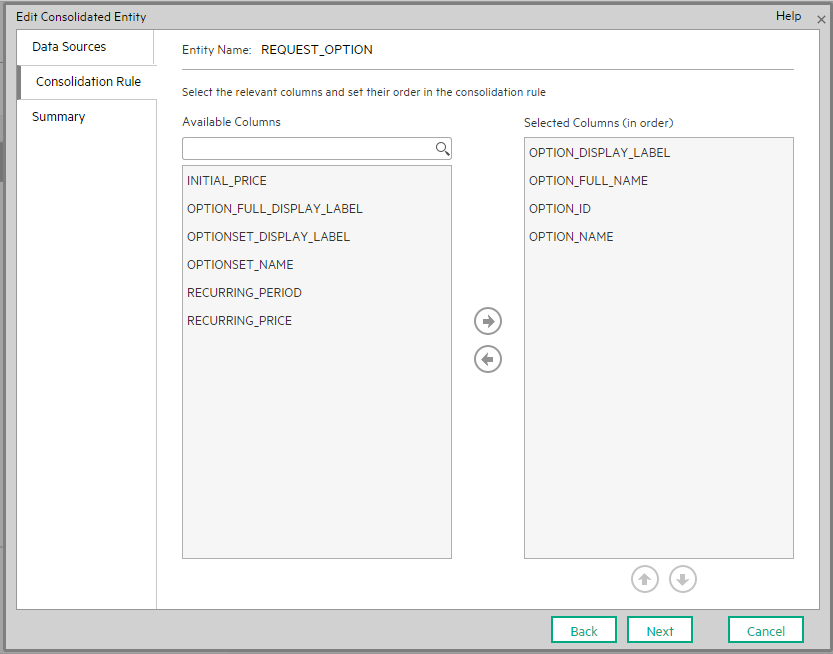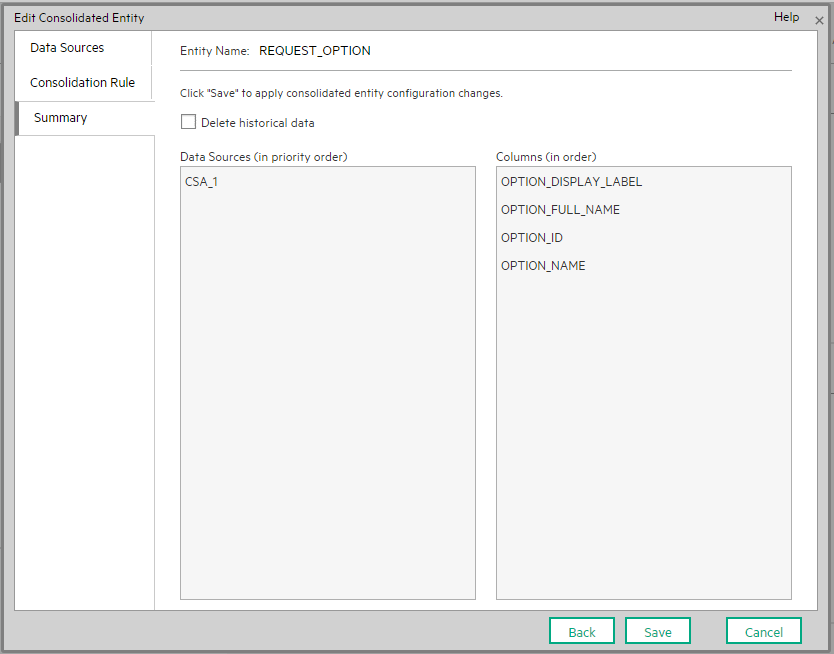Searching the Help
To search for information in the Help, type a word or phrase in the Search box. When you enter a group of words, OR is inferred. You can use Boolean operators to refine your search.
Results returned are case insensitive. However, results ranking takes case into account and assigns higher scores to case matches. Therefore, a search for "cats" followed by a search for "Cats" would return the same number of Help topics, but the order in which the topics are listed would be different.
| Search for | Example | Results |
|---|---|---|
| A single word | cat
|
Topics that contain the word "cat". You will also find its grammatical variations, such as "cats". |
|
A phrase. You can specify that the search results contain a specific phrase. |
"cat food" (quotation marks) |
Topics that contain the literal phrase "cat food" and all its grammatical variations. Without the quotation marks, the query is equivalent to specifying an OR operator, which finds topics with one of the individual words instead of the phrase. |
| Search for | Operator | Example |
|---|---|---|
|
Two or more words in the same topic |
|
|
| Either word in a topic |
|
|
| Topics that do not contain a specific word or phrase |
|
|
| Topics that contain one string and do not contain another | ^ (caret) |
cat ^ mouse
|
| A combination of search types | ( ) parentheses |
|
- Content Administrator
- Business Analytics components
- Data Management - Best Practices
- Data Management - Install Content Pack
- Customize an Existing Content Pack
- Data Management - Connect Data Source
- Data Management - Configure Consolidation - Management
- Data Management - Add New Configuration
- Data Management - Configure Consolidations - Edit
- Data Management - Run ETL - Content Flow Management
- Data Management - Activate CAPs
- Semantic Layer - Context Management
- Semantic Layer - Data Loader Scheduler
- Semantic Layer - Excel or .CSV File Loader
- SAP BusinessObjects Enterprise Contexts (Universes)
- Import or Export Contexts, Data, KPIs, Metrics, Trees, Pages, or Components
Data Management - Configure Consolidations - Edit
You can edit your consolidated entities by changing their data sources, the priority of their data sources, or the columns you want to use in the consolidation rules.
Click Admin > Data Management > Configure Consolidation, select an entity, and click 
 About consolidation
About consolidation
When ITBA integrates with several data sources, overlapping information might appear, for the same entity (for example: Customer,) in different data sources (S1, S2, and S3). If the information is not consolidated, this might cause the import of additional and confusing data for the entity. For example you might get for the same Customer: the Customer Name, Customer ID, Address, ZIP code, and Country provided by S1, the Customer Name, Customer ID, and Domain provided by S2, and the Customer Name, Customer ID, and the Billing information from S3.
To consolidate the information, you first select the entity that you want to consolidate (for example Customer) and you then select the priority order of the data sources (S1, S3, and then S2) in the Entity and Priorities page of the Consolidation wizard. This means that ITBA checks if the entity (Customer) in the first data source (S1) includes data. If there is data, it is imported into ITBA. If there is no data, ITBA checks the entity for data in the second data source (S3). If there is data, it is imported into ITBA. If not, the procedure continues until data is found in one of the data sources in the priority order list or no data has been found at all.
Each entity has dimensions (table columns). To construct a unique key for the consolidation you select the dimensions that will be used as keys (for example Customer ID), in the Consolidation Rule page in the Consolidation wizard.
For details on the Consolidation wizard, see Data Management - Add New Configuration .
 Edit a consolidated entity
Edit a consolidated entity
To edit a consolidated entity:
-
Click Admin > Data Management > Configure Consolidation, select an entity, and click
.
The Edit Consolidated Entity wizard opens.
- Edit the data sources and their priority in the Data Sources page, and click Next.
- Edit the entity columns and their priority in the Consolidation Rule page, and click Next.
-
Click Next.
The entity is updated and listed in the Consolidation Management page. Its status is Deactivated.
For details, see Configure the Consolidation .
 Edit consolidated entities
Edit consolidated entities
The wizard pages are as follows:
-
User interface elements are described below (when relevant, unlabeled elements are shown in angle brackets):
UI Element
Description
Data Sources (in priority order) Move the data sources into the relevant priority order using the
arrows.
You can also drag and drop the data sources to set their priority order.
-
User interface elements are described below (when relevant, unlabeled elements are shown in angle brackets):
UI Element Description
Entity Name The name of the entity you are currently editing. Available Columns The list of columns (dimensions) of the entity.
Select or unselect the columns using the horizontal arrows.
Selected Columns (in order) The list of columns you have selected in the relevant priority order.
Select or unselect the columns using the horizontal arrows.
Change the priority order using the vertical arrows. You can also drag and drop the columns to change their order in the consolidation rule.
-
User interface elements are described below (when relevant, unlabeled elements are shown in angle brackets):
UI Element Description
Entity Name The name of the entity you are currently consolidating. Delete historical data Select to delete the historical data of the consolidated entity you are editing when you click Save.
Do not select if you want to keep the historical data of the consolidated entity you are editing.
Data Sources (in priority order) The list of data sources in the relevant priority order. Columns (in order) The list of entity columns in the relevant order in the consolidation rule.
Save Click to save the changes. The consolidated entity is then placed in the list of entities in the Configuration Management page and the entity status is set to Deactivated.
We welcome your comments!
To open the configured email client on this computer, open an email window.
Otherwise, copy the information below to a web mail client, and send this email to SW-Doc@hpe.com.
Help Topic ID:
Product:
Topic Title:
Feedback:











